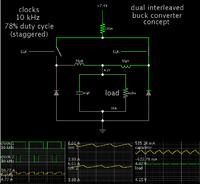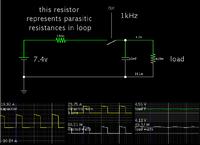kasamiko
Full Member level 3

- Joined
- May 23, 2004
- Messages
- 154
- Helped
- 16
- Reputation
- 32
- Reaction score
- 18
- Trophy points
- 1,298
- Location
- Philippines
- Activity points
- 1,121
Hi,
I'm looking for any applicable circuit to stepdown a 7.4 volts source to 4.2 volts with at least 10 amperes continuous current..SMD design is an added bonus..
I was looking at LTM4641 but any suggestions will b e appreciated..
I'm looking for any applicable circuit to stepdown a 7.4 volts source to 4.2 volts with at least 10 amperes continuous current..SMD design is an added bonus..
I was looking at LTM4641 but any suggestions will b e appreciated..



